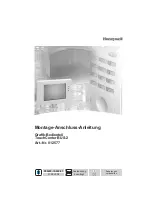
www.canadiansolar.com
| 11
(slight shifts may be necessary to access module
grounding holes).
· The loads described in this manual correspond
to test loads. For installations complying with IEC
61215-2: 2016 and UL 1703, a safety factor of 1.5
should be applied for calculating the equivalent
maximum authorized design loads. Project design
loads depend on construction, applicable standards,
location and local climate. Determination of the
design loads is the responsibility of the racking
suppliers and / or professional engineers. For
detailed information, please follow local structural
code or contact your professional structural
engineer.
6.1
MOUNTING METHOD: BOLTING
· This mounting method has been qualified by
Canadian Solar Inc. as well as certified by VDE. and
CSA.
· Modules should be bolted to supporting structures
through the mounting holes in the rear frame
flanges only.
· Each module must be securely fastened at a
minimum of 4 points on two opposite sides.
M6 X 1 - Grade 8.8 (1/4”-20 Grade B7) galvanized
or A2-70 stainless steel bolt and nut are used for
bolting method of CS6X, CS6P, CS6A, CS6V series.
M8 X 1.25 - Grade 8.8 (5/16”-18 Grade B7)
galvanized or A2-70 stainless steel bolt and nut are
used for CS1K, CS1V, CS3U, CS3K, CS6U and CS6K
series.
The yield strength of bolt and nut should not be
less than 450 MPa.
· Tightening torques should be within 6~12 Nm
(4.4~8.9 ft-lbs) and 17~23 Nm (12.5~17.0 ft-lbs)
respectively for M6 (1/4”-20) and M8 (5/16”-18)
coarse thread bolts, depending on bolt class.
· In areas with heavy wind loads, additional
mounting points should be used. The system
designer and the installer are responsible for
correctly calculating the loads and ensuring that
the supporting structure meets all the applicable
requirements.
Mounting method: Bolting
· Modules should be bolted at the following hole
locations depending on the configuration and
loads:
Bolt
Frame
Nut
Spring
Washer
Washer
Washer
Rail












































